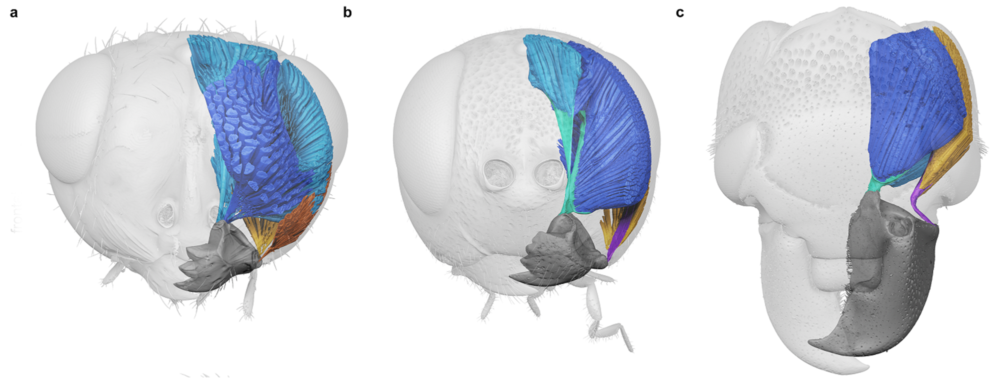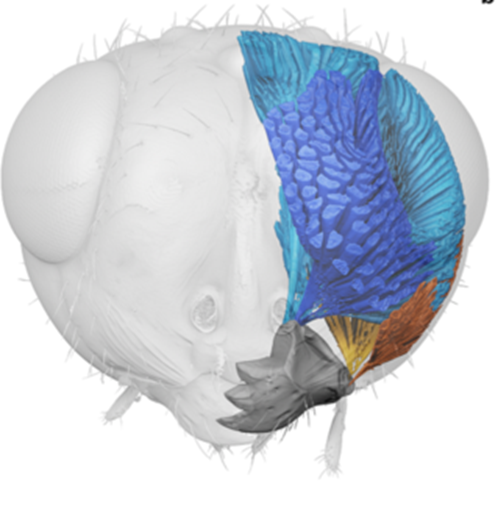Flexible mouthparts enabled extreme species diversity of tiny wasps
Insects are among the most diverse groups of organisms in the world. The accelerating rate of species extinction has brought them into the public eye, and with it the intensification of scientific research into their role in the biodiversity of our planet and the threats to our ecosystems arising from species extinction.
At the UFO experimental station of IPS at KIT Light Source, large numbers of different insects are currently being studied with high-throughput microtomography in order to better understand which morphological adaptations contributed to their evolutionary success and biodiversity.
Using microtomographic 3D images of chalcid wasps, a team researchers now discovered a new type of insect mouthparts: flexible mandibles, which have given this particularly species-rich group of tiny insects a decisive evolutionary advantage. There are an estimated 500,000 species of chalcid wasps worldwide. Most of them develop parasitically in or on other insects, which thus serve as food for the wasp larvae. Chalcid wasps succeed in all conceivable habitats and a key to this success lies in their ability to exploit hidden insects in hard-to-reach environments, such as wood or other plant parts, as hosts.

Fig.: 3D reconstructions of mandibles and attached musculature in a chalcid wasp (a), an evanioid wasp (b) and a histerid beetles (c). Only chalcid wasps show flexible mandibular movement, while in other insects it is restricted to a fixed axis of rotation.
Microtomography provided detailed digital representations of the interior of wasp heads, their mandibles and associated musculature. It was shown that all chalcid wasps exhibit these flexible moving mandibles, while other wasps and insect groups do not. These precision tools enabled chalcid wasps to exploit new host groups that were largely inaccessible to competing insect groups. The evolution of this unique morphology of flexible wasp mandibles thus represented a key evolutionary event that was the prerequisite for occupying important new ecological niches and likely triggered their extreme diversification.
Publication
Evolution of flexible biting in hyperdiverse parasitoid wasps
Kamp, T. van de; Mikó, I.; Staniczek, A. H.; Eggs, B.; Bajerlein, D.; Faragó, T.; Hagelstein, L.; Hamann, E.; Spiecker, R.; Baumbach, T.; Janšta, P.; Krogmann, L., 2022. Proceedings of the Royal Society B: Biological Sciences, 289 (1967), Art.-Nr.: 2021.2086. doi:10.1098/rspb.2021.2086

